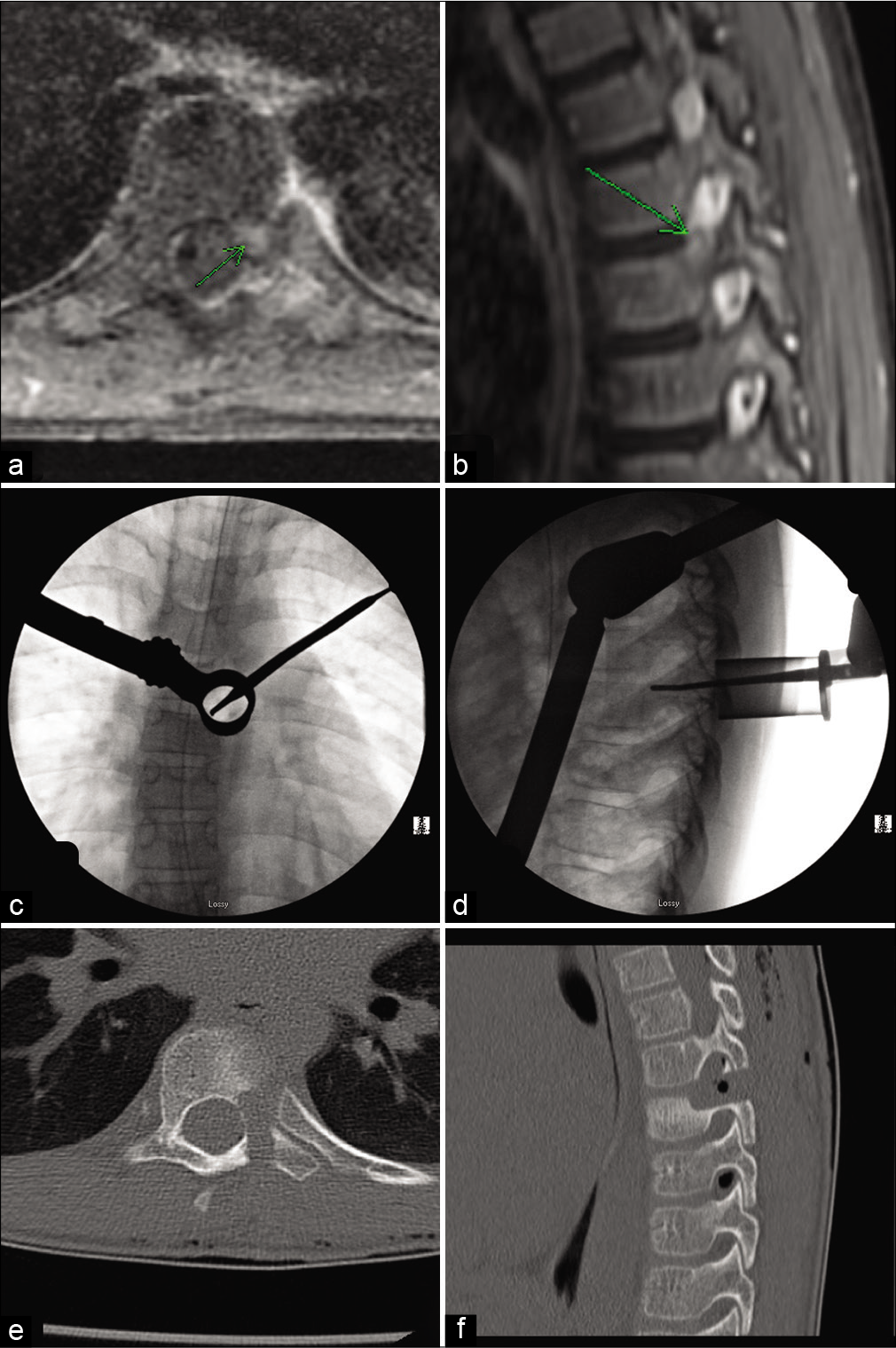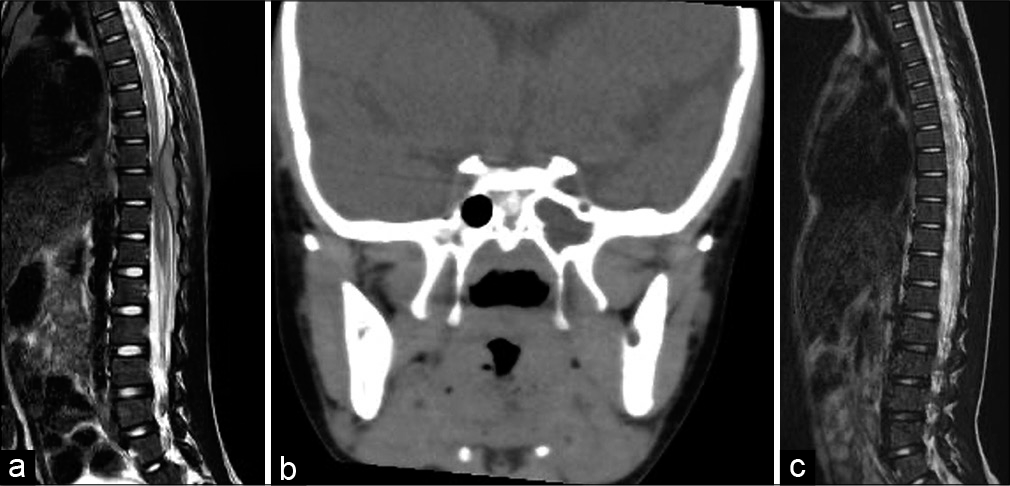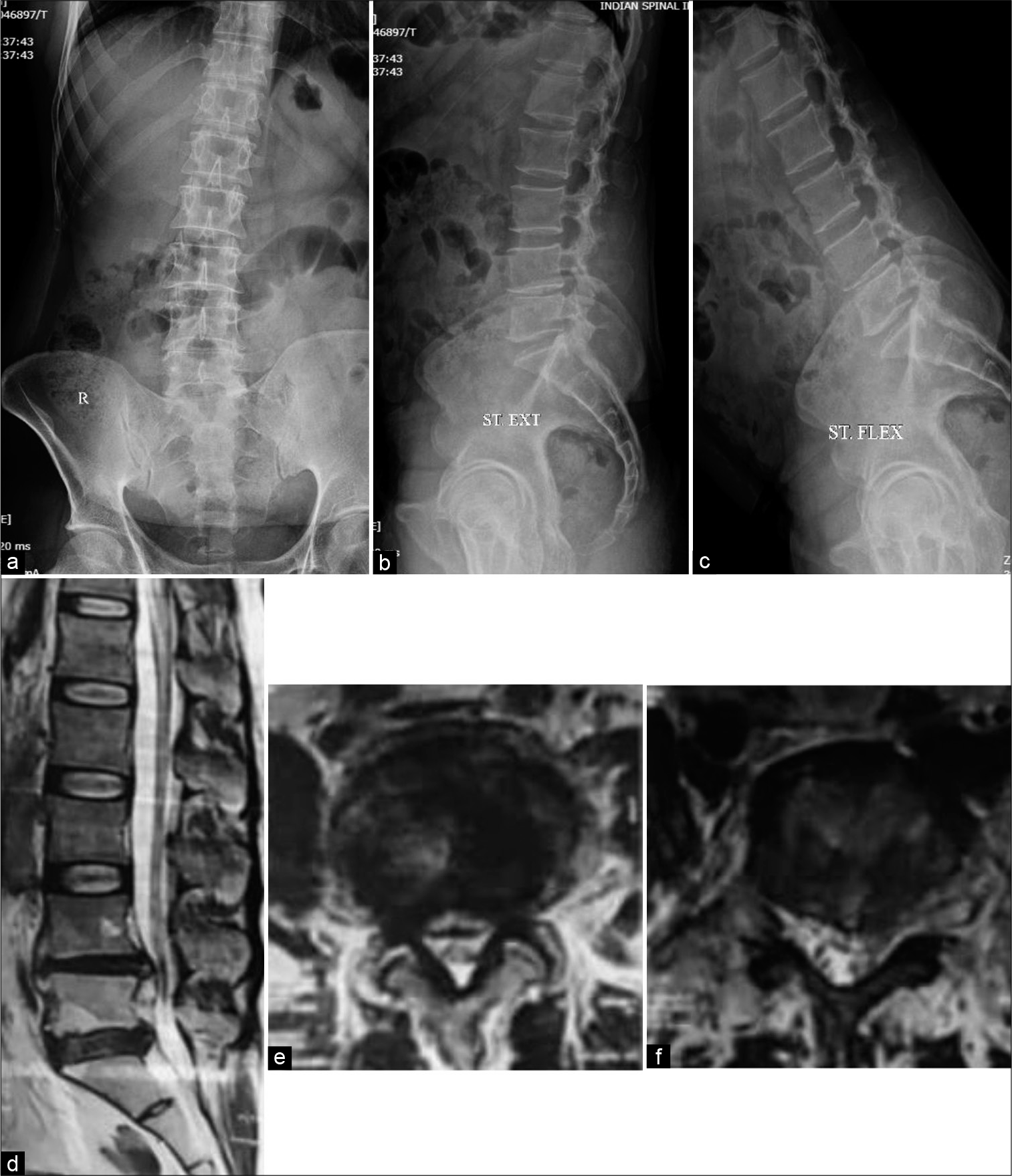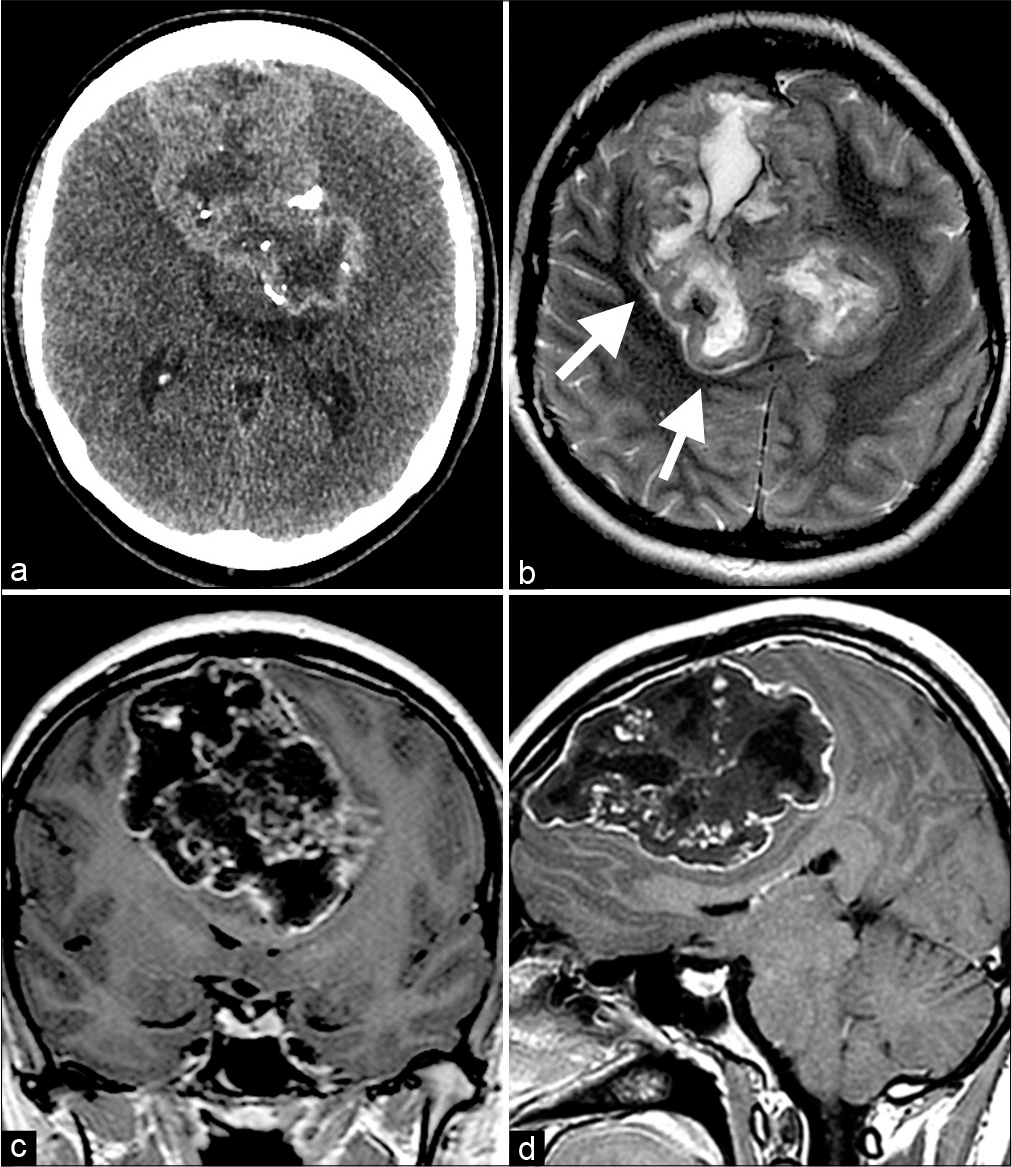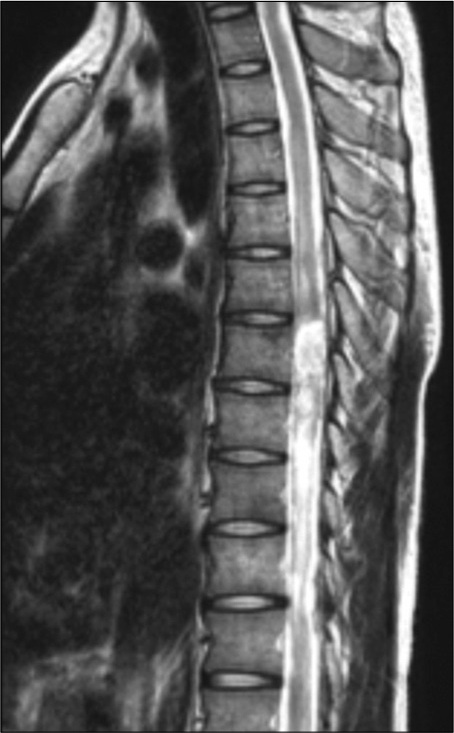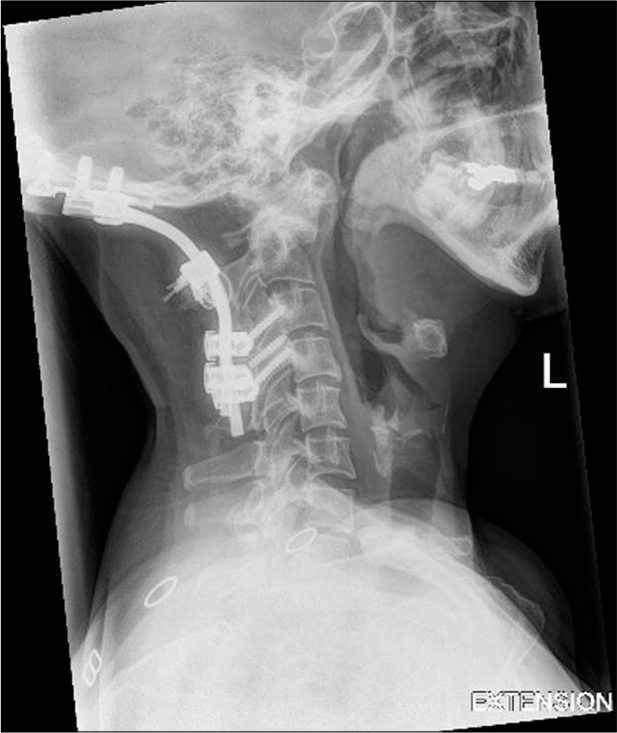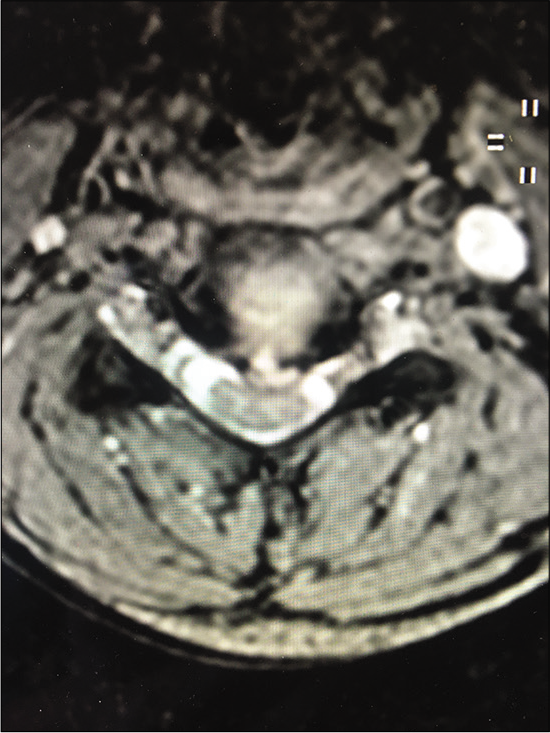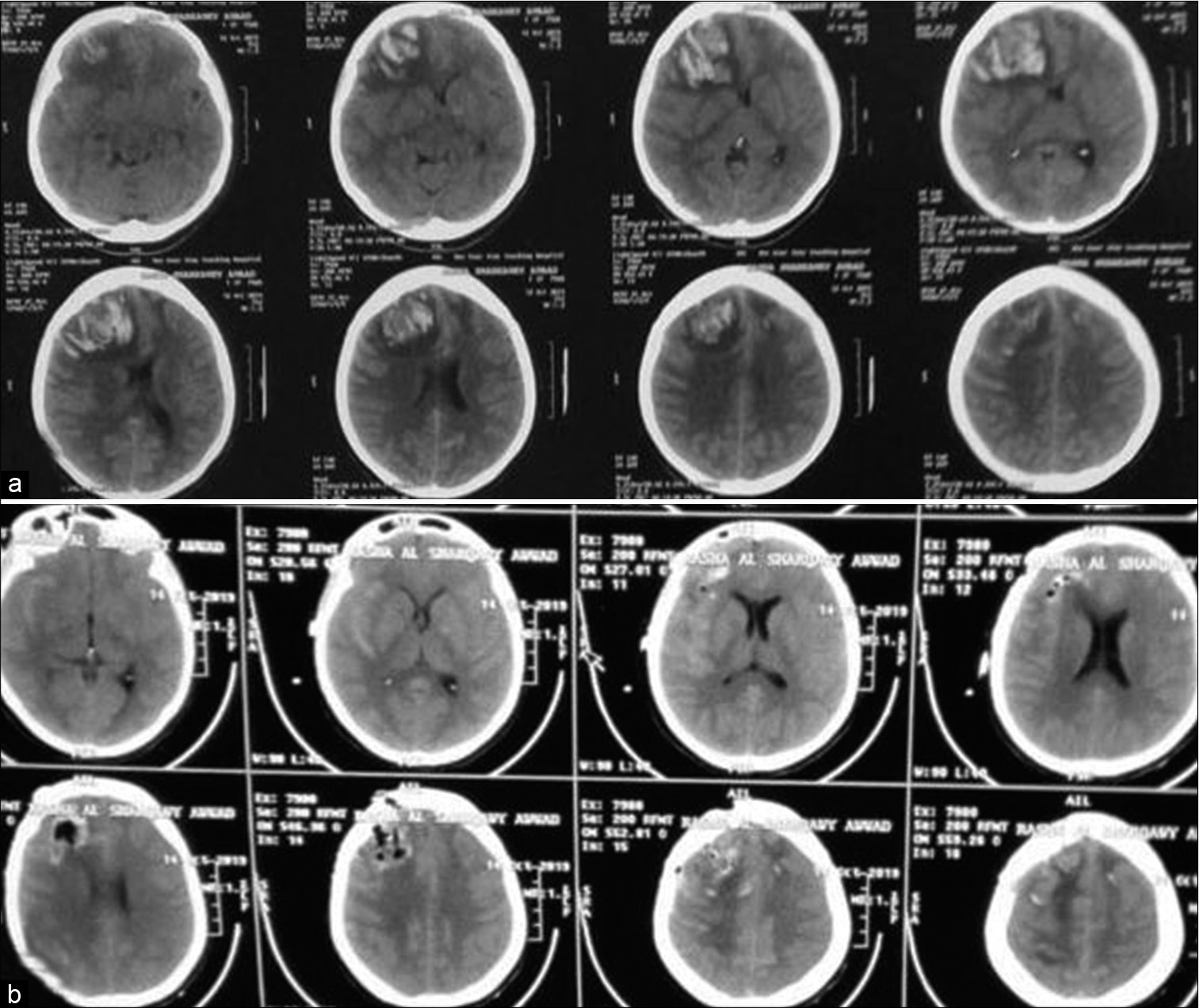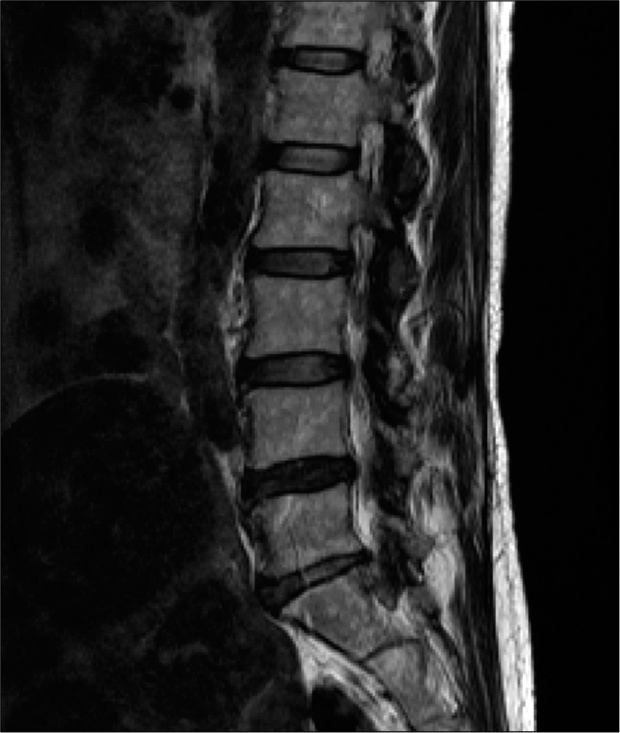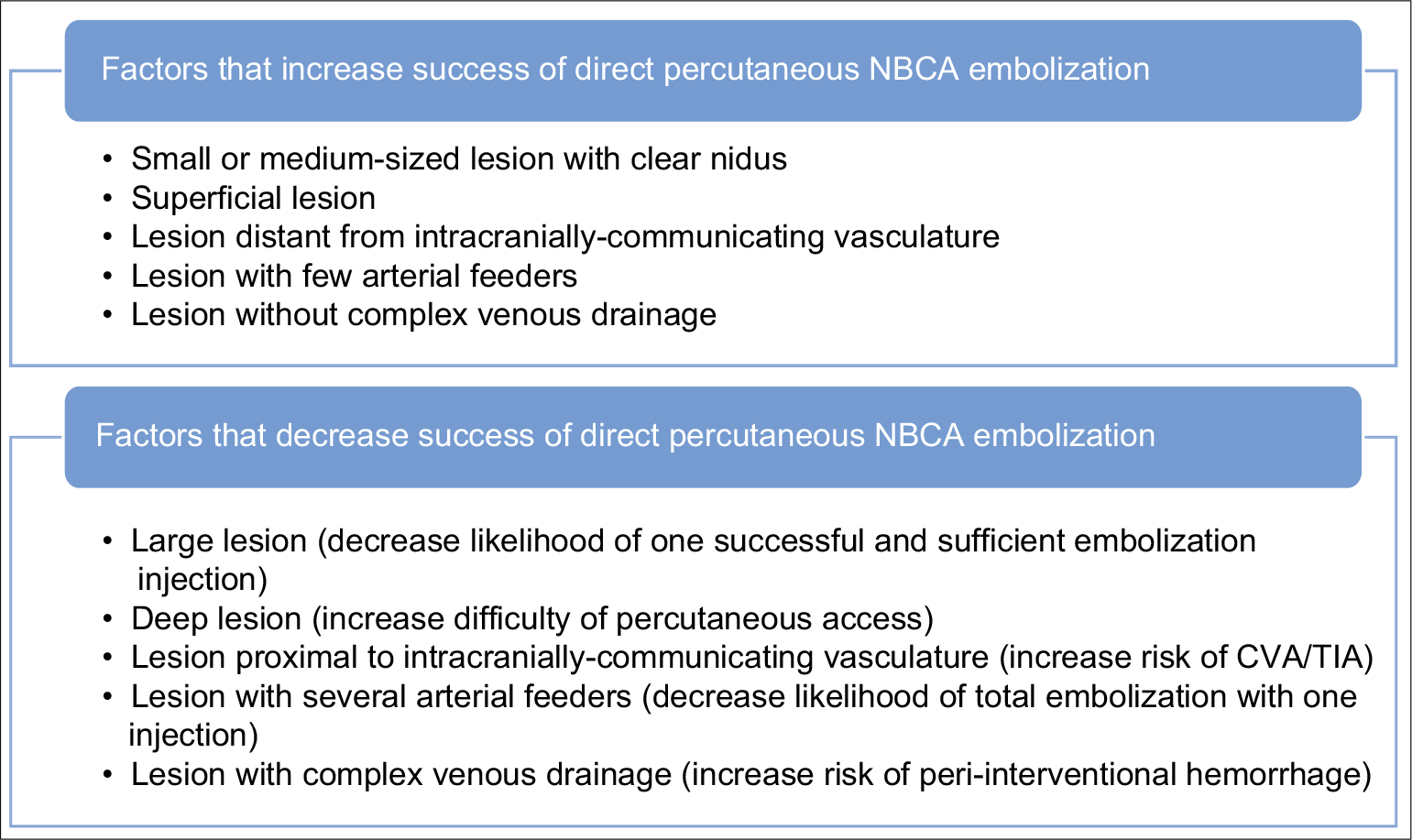Minimally invasive resection of pediatric osteoid osteomas: A report of two cases
Date of publication: 08-Apr-2021
Background: Spinal osteoid osteomas (OOs) are common benign bone tumors that most frequently affect the posterior elements. They occasionally (e.g., 10% of the time) necessitate surgical resection for intractable pain. Given their small size and posterior positions, many may be amenable to minimally invasive surgical approaches.
Pediatric spinal infection with epidural abscess: A report of two cases
Date of publication: 08-Apr-2021
Background: Pediatric spinal infections are rare and often accompanied by abscesses. Delayed diagnosis commonly leads to a poor neurological prognosis, emphasizing the need for early diagnosis and treatment.
Iatrogenic postoperative spondylodiscitis attributed to Burkholderia cepacia infection in an immunocompetent patient
Date of publication: 08-Apr-2021
Background: Pyogenic spondylodiscitis (PS) is a rare infection involving the intervertebral disk space, adjacent vertebral endplates, and vertebral bodies. PS occurs in the elderly and immunocompromised patients, and is an uncommon cause of initial and/or postoperative PS. There are only seven cases involving this organism reported in literature.
Giant chondrosarcoma of the falx in an adolescent: A case report
Date of publication: 08-Apr-2021
Background: Intracranial chondrosarcomas are slowly growing malignant cartilaginous tumors that are especially rare in adolescents.
Intradural extramedullary tuberculoma of the thoracic spine – A rare case report of paraparesis
Date of publication: 08-Apr-2021
Background: Intradural extramedullary tuberculoma of the spinal cord (IETSC) is an extremely rare form of spinal tuberculosis (TB) that is believed to be due to a host’s immune reaction against the Mycobacterium protein derivatives.
Considerations in revising occipitocervical fixation for dysphagia
Date of publication: 30-Mar-2021
Background: Dysphagia after occipitocervical fixation (OCF) is a complex phenomenon and revision surgery in this context involves difficult decision-making. The pathogenesis is explored and surgical strategies discussed. A surgical strategy that has not been described before in the management of this condition, is discussed with two illustrative cases.
Case of the week: Updating a cervical MR scan avoided unnecessary cervical surgery
Date of publication: 30-Mar-2021
Background: As spinal surgeons, we have all likely seen cases in which lumbar disc herniations regressed/resolved on successive MR studies. Here, we present a patient whose original cervical MR showed a large C4-C5 cervical disc herniation that completely resolved on the follow-up MR obtained 9 months later, thus avoiding cervical surgery.
Surgical management of cerebral venous sinus thrombosis: Case series and literature review
Date of publication: 30-Mar-2021
Background: Cerebral venous sinus thrombosis (CVST) is not a common type of stroke (5%) but still hazardous to be misdiagnosed or mistreated. Aggressive medical treatment is usually failed to hinder increase intracranial tension. Therefore, decompressive craniectomy (DC) is the final measure to mitigate the deleterious effect of supratentorial herniation. The purpose of the study is to illustrate our experience with the surgical treatment of CVST and reviewing the previous works of literature.
Middle cluneal nerve entrapment neuropathy attributable to lumbar disc herniation
Date of publication: 30-Mar-2021
Background: Middle cluneal nerve entrapment neuropathy (MCN-EN) is a known cause of low back pain (LBP). Here, we succeeded in treating a patient with a lumbar disc herniation who actually had MCN-EN with a nerve block and neurolysis.
Direct N-butyl-2-cyanoacrylate injections to the head and neck for percutaneous embolized devascularization
Date of publication: 30-Mar-2021
Background: N-butyl-2-cyanoacrylate (NBCA) has been used for vascular malformations since the 1980s; however, few studies have looked at applications, procedural techniques, and outcome throughout many institutions. Herein, we review applications, procedural techniques, previous literature, and outcomes for the use of NBCA specifically through percutaneous technique in treating head and neck vascular pathology.


